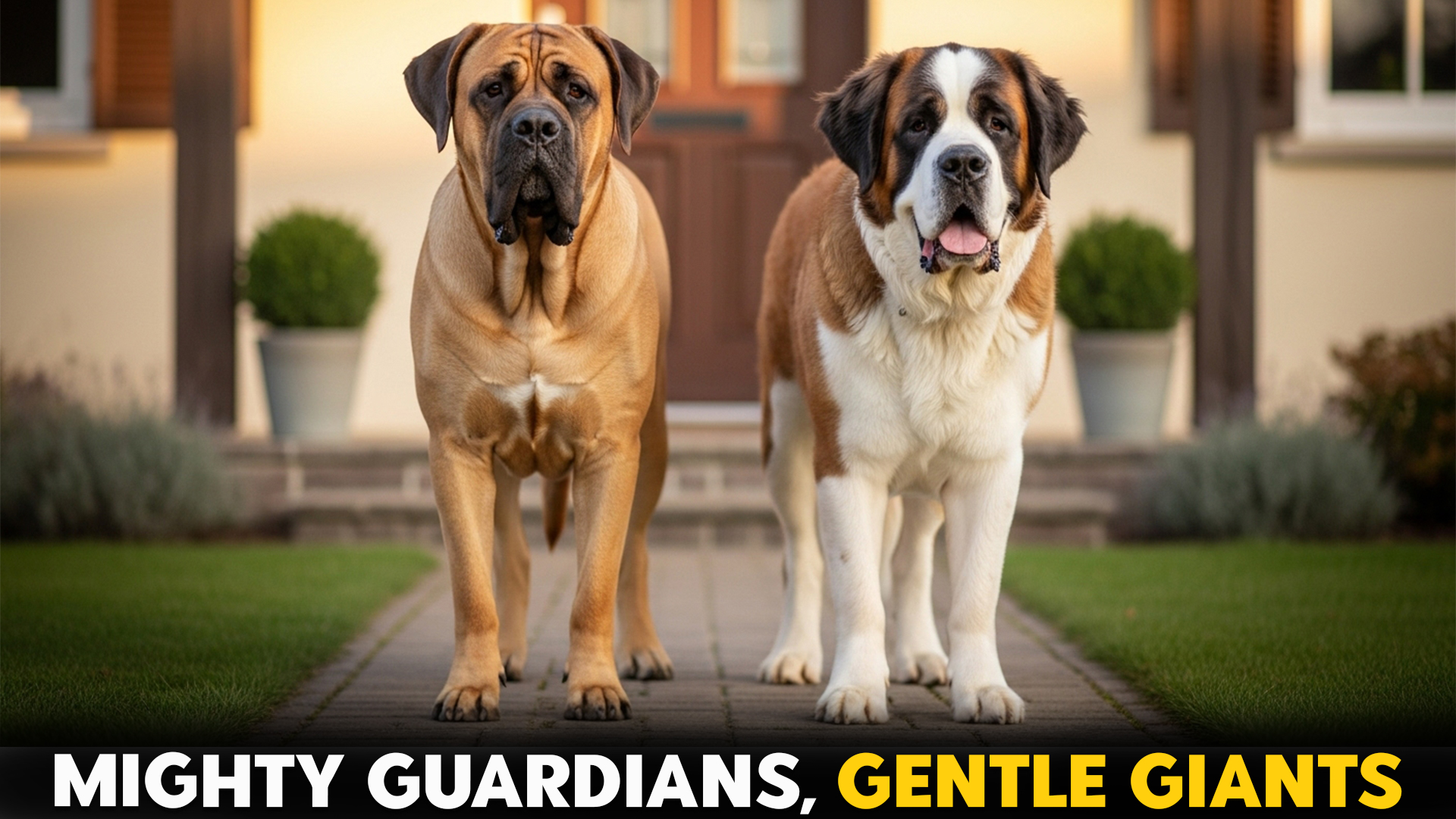Imagine a dog so big it could be mistaken for a walking teddy bear—but with the heart of a loyal protector. That’s the magic of gentle giants like Saint Bernards and other large guard dog breeds.
They might look huge and strong, but deep down, they’re soft, loving, and incredibly loyal to their families. Many of them would rather offer a friendly lick than a scary bark! Still, don’t let their sweet nature fool you—they’re brave, watchful, and always ready to keep their loved ones safe.
In this article, we’ll explore seven amazing big dog breeds that combine strength with gentleness. Whether you love them for their size, their loyalty, or their kind hearts, these gentle giants show that being big and strong can also mean being warm and loving.
Let’s meet these wonderful furry protectors!
Gentle Giants Among Guard Dog Breeds Like Saint Bernards
1. Mastiff
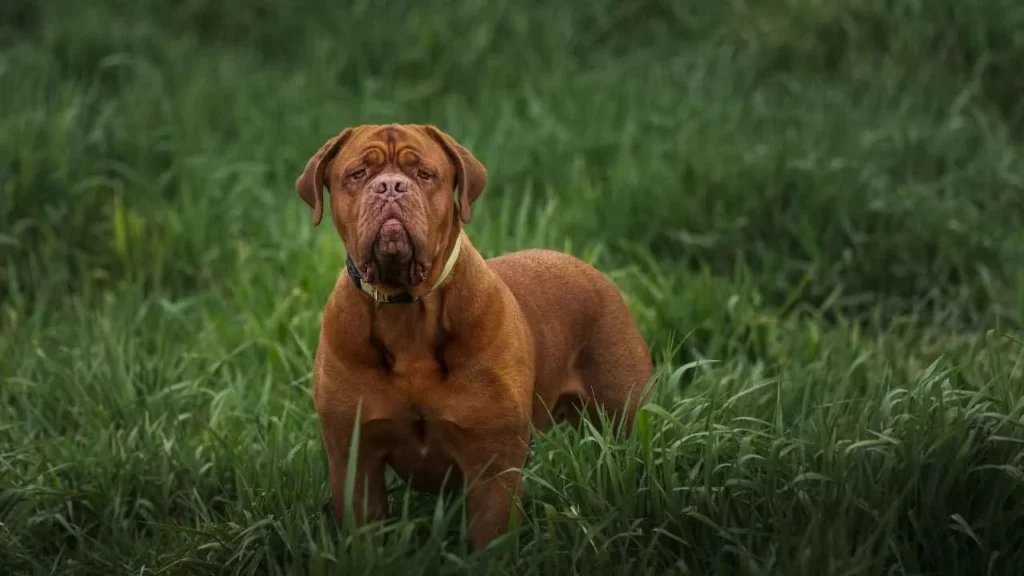
The Mastiff is a true gentle giant—massive in size, yet calm and deeply loyal. Known for its steady temperament, this breed has an instinct to protect its home without being overly aggressive. Families often adore the Mastiff for its quiet confidence and affectionate nature.
Though powerful, the Mastiff is surprisingly gentle, especially with children and familiar faces. With early socialization, this impressive guardian learns to welcome visitors calmly while still standing watch. Its loyal heart and gentle eyes reveal a dog that’s as protective as it is loving.
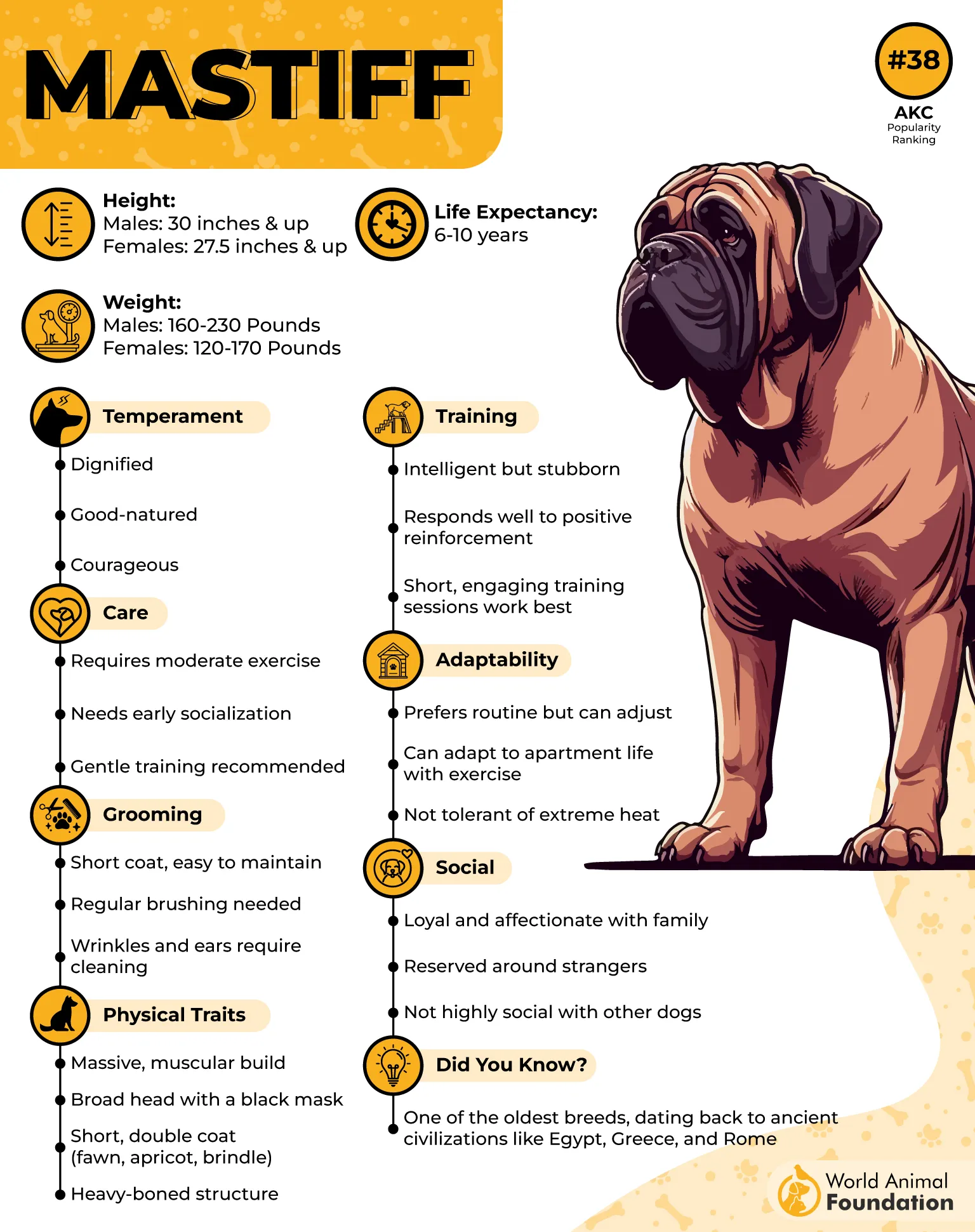
These dogs thrive in spacious homes where they can stretch their large frames and relax beside their people. According to the American Kennel Club, their short coats are easy to care for, needing just occasional brushing to stay neat. Despite their size, they prefer soft landings—both physically and emotionally.
Mastiffs are known to be reserved with strangers but never fearful. They form strong family bonds, often following their favorite humans around the house just to stay close. This Quora thread discusses how their quiet presence offers both comfort and security.
For families looking for a watchful companion with a calm spirit, the Mastiff fits beautifully. It’s a reminder that strength and gentleness can live side by side in one magnificent dog.
Quick Tips
Begin socialization and obedience early to build confidence
Provide strong, supportive gear for their size and strength
Keep them cool and comfortable during warmer months
2. Greater Swiss Mountain Dog
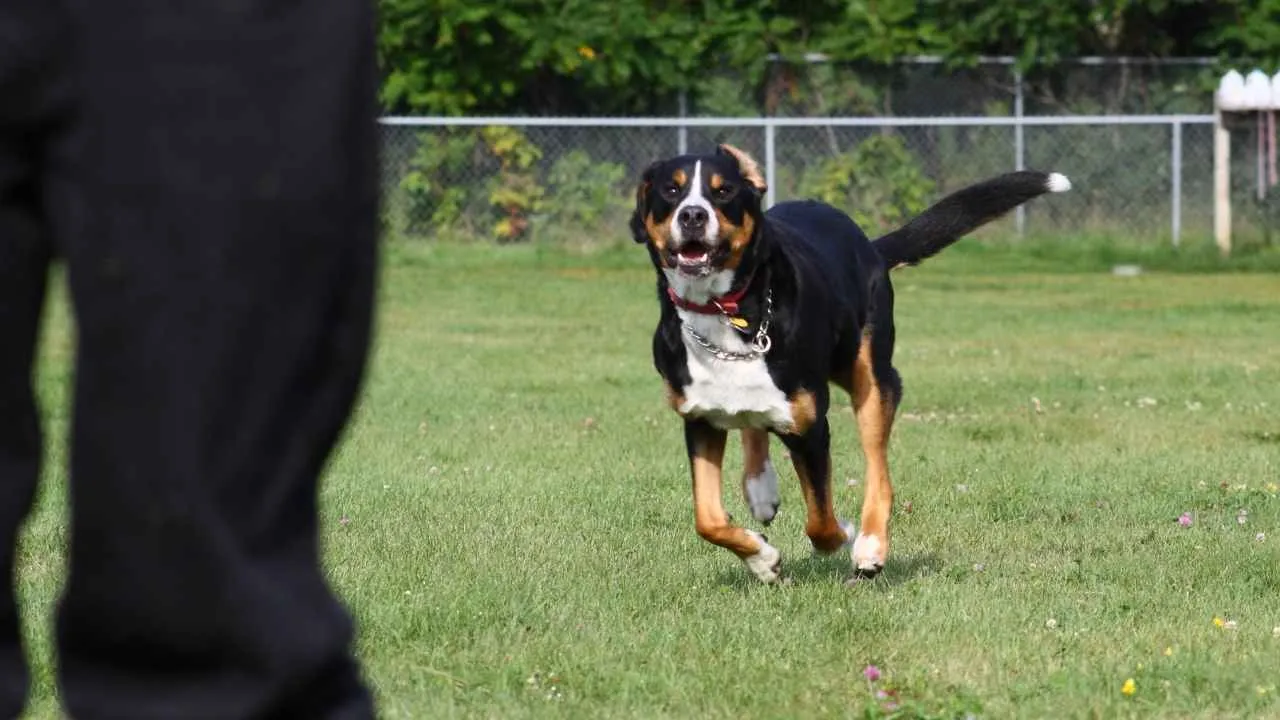
The Greater Swiss Mountain Dog blends bold looks with a loyal, big-hearted personality. Its striking black, rust, and white coat turns heads wherever it goes, but its devotion and protectiveness are what make it unforgettable. This is a guardian who watches over the home with quiet confidence.
As per Orvis, Swissies are naturally alert and will give a deep, unmistakable bark when something’s amiss.
They’re not aggressive by nature, preferring to stand their ground and keep an eye on things. With early training, they grow into steady companions who balance gentleness with strong protective instincts.
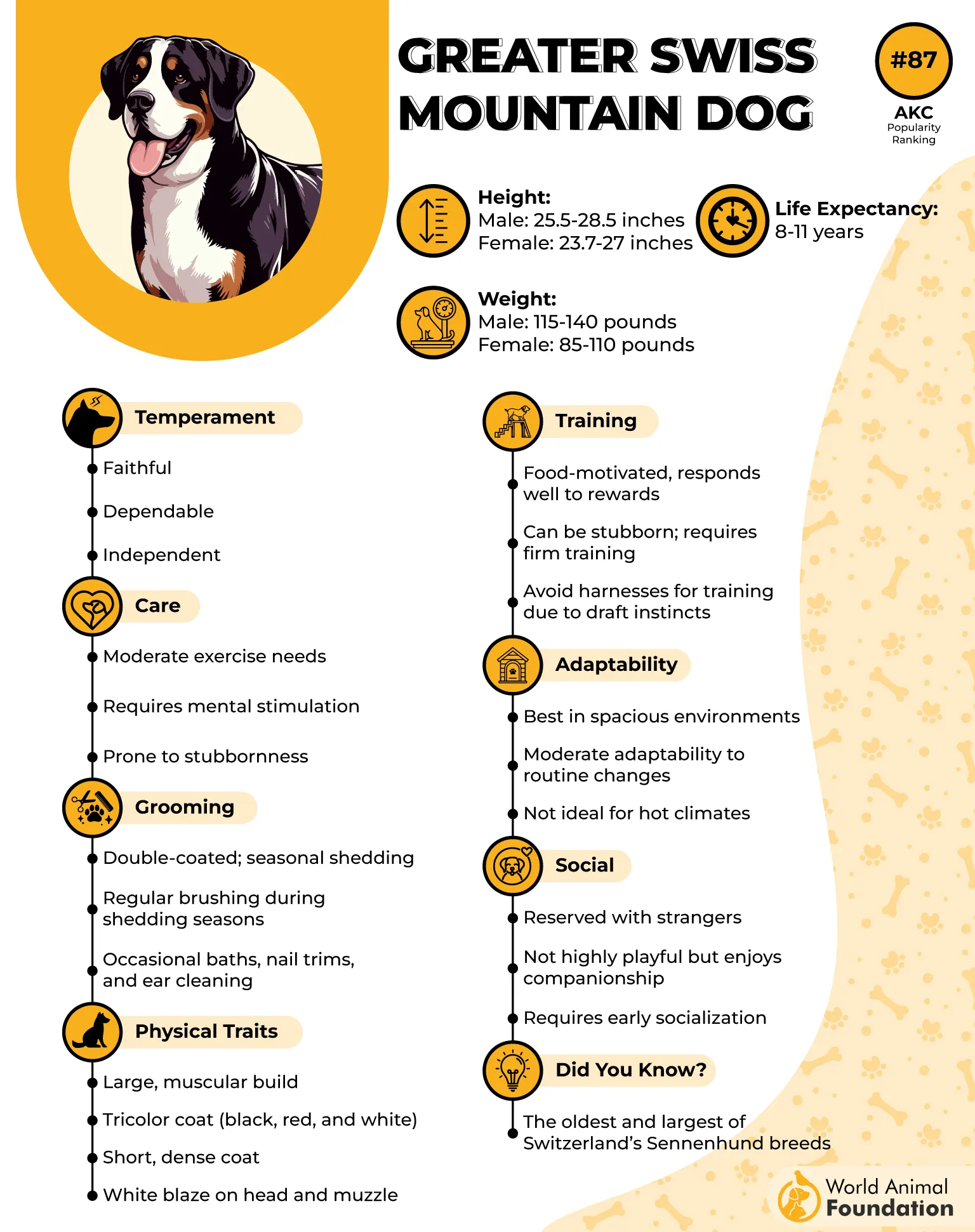
As hardworking dogs bred in the Swiss Alps, they thrive when given a purpose. Activities like cart pulling, hiking, or even helping with yard work keep them both mentally and physically engaged. Without enough stimulation, they may grow restless—so active families are a great match.
Their thick double coat is designed for cooler climates, offering comfort in the cold but requiring extra care during hot weather. Regular brushing helps manage shedding, especially during seasonal changes. These dogs love being outside when it’s cool, often sprawling in the snow with joy.
Among gentle giant breeds, the Greater Swiss Mountain Dog stands out for its mix of courage, companionship, and reliability. It’s a wonderful choice for families seeking a calm, steadfast protector who’s just as happy to play as to patrol.
Quick Tips
Offer shade and water on warm days to prevent overheating
Provide regular brushing, especially during heavy shedding
Keep them busy with tasks or training to fulfill their working instincts
3. Giant Schnauzer
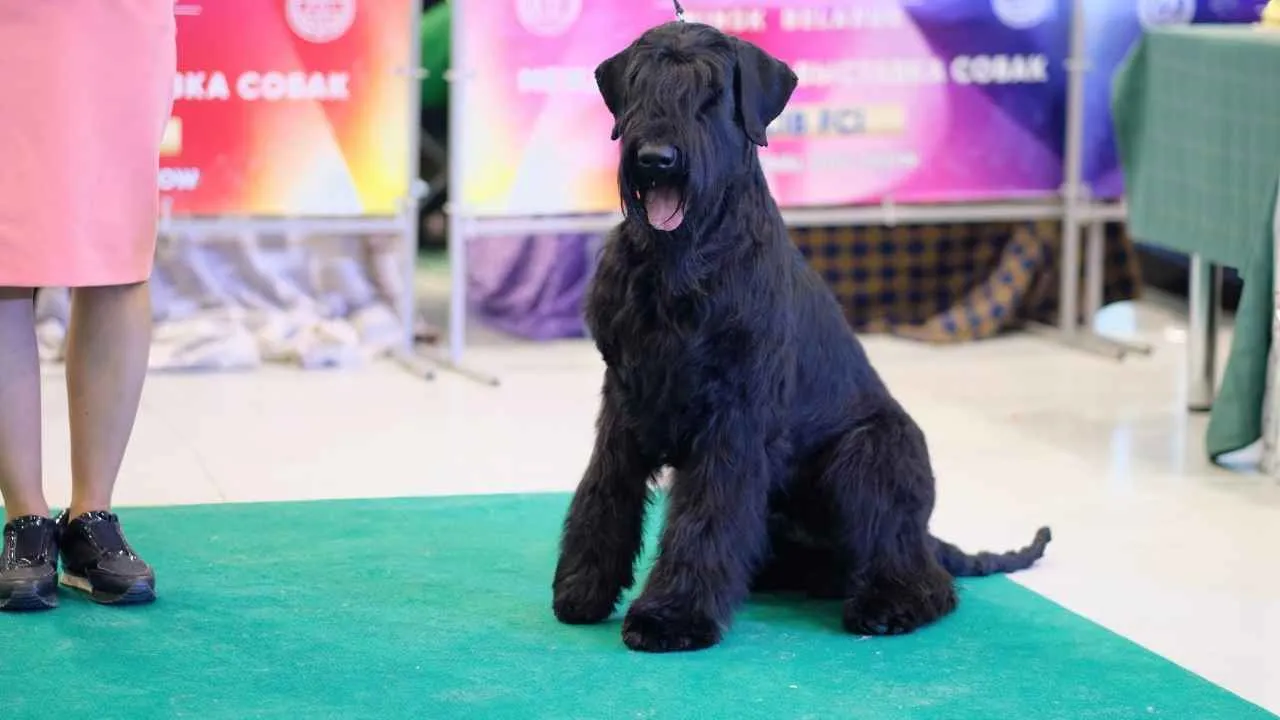
The Giant Schnauzer is a bold, intelligent, and deeply loyal breed with a big personality to match its size. Originally bred for guarding and herding, this dog combines strong working instincts with a playful spirit. It’s the kind of companion who’s always up for a challenge and thrives with active families.
Highly alert and confident, Giant Schnauzers make excellent watchdogs. They naturally keep an eye on their surroundings, quick to notice when something’s out of place. Early socialization ensures their protective streak stays balanced with friendliness.
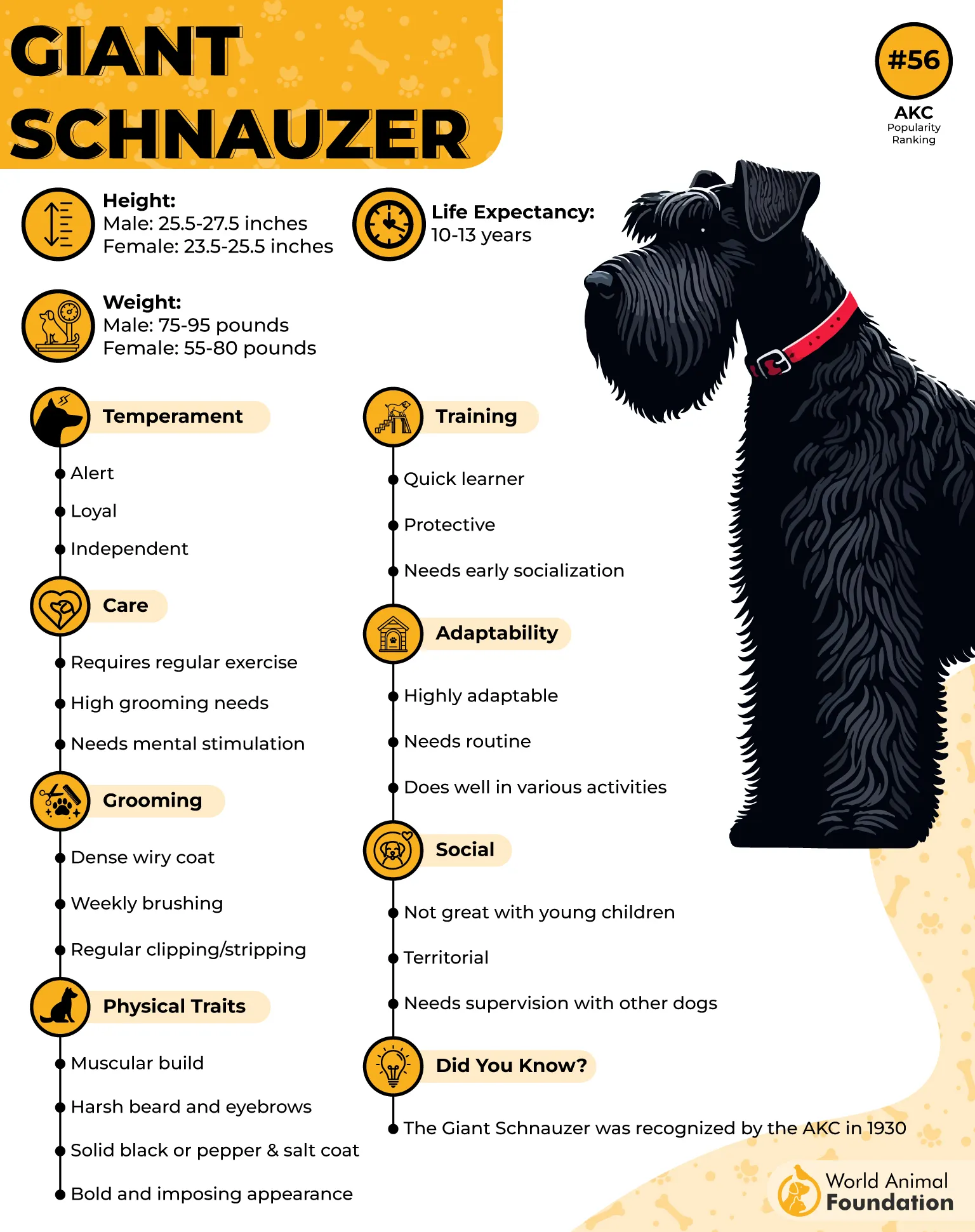
Beneath that impressive beard and wiry coat lies an affectionate, people-oriented heart. These dogs love being close to their families, often following them from room to room. They do best when treated as true members of the household, not left alone for long periods.
Training is essential, not because they’re stubborn, but because they’re smart. They need mental workouts as much as physical ones, like puzzle games, obedience drills, or agility courses. A bored Giant Schnauzer might invent its own “jobs,” which aren’t always human-approved.
For anyone seeking a protective yet affectionate giant with plenty of energy, the Giant Schnauzer is a standout choice. With guidance and attention, they become loyal, lively companions and devoted guardians.
Quick Tips
Provide daily exercise and consistent mental stimulation
Start obedience and socialization early to shape good habits
Maintain their wiry coat with regular grooming and trims
4. Newfoundland
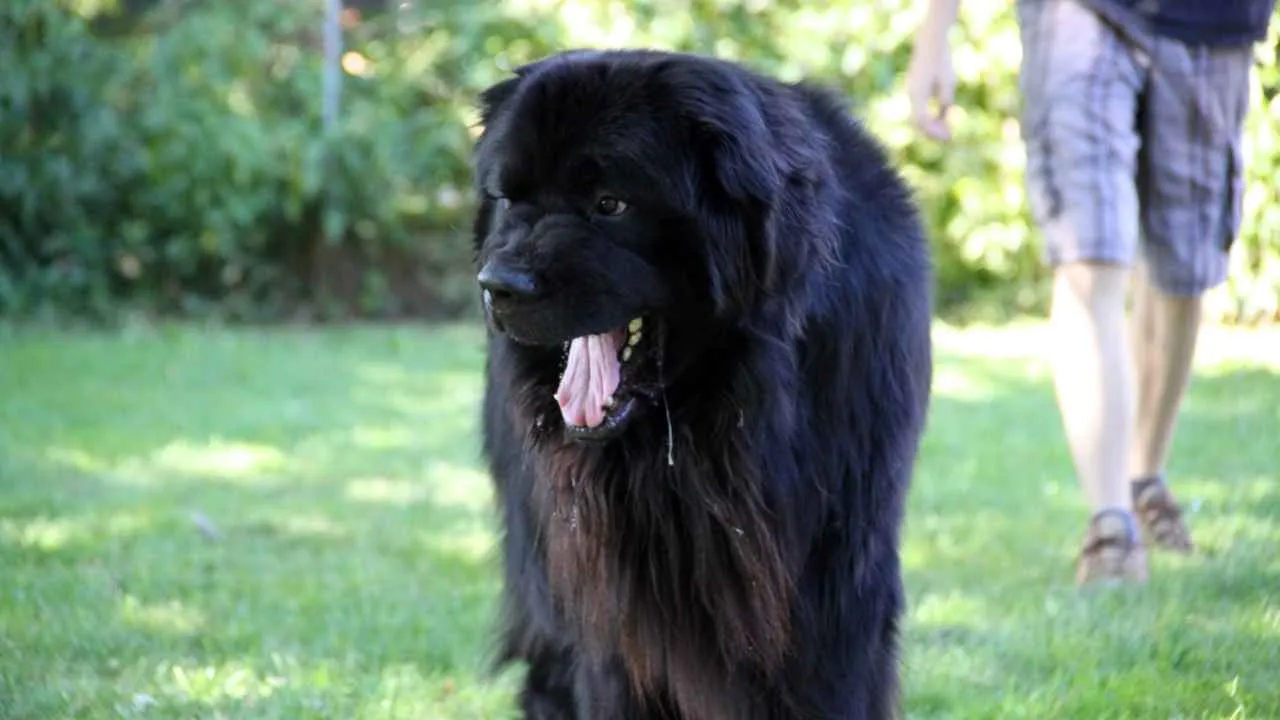
The Newfoundland is a massive, strong dog with a thick, water-resistant coat and a reputation for gentle endurance. It was historically used to haul nets, pull carts, and rescue swimmers in icy waters. Today, many admire it for combining guardian instincts with calm affection.
Quiet and steady by nature, Newfoundlands bond deeply with children and family members, often acting as a gentle, protective presence. Their size and strength are balanced by patience and tolerance. They are not aggressive but will guard what they love.
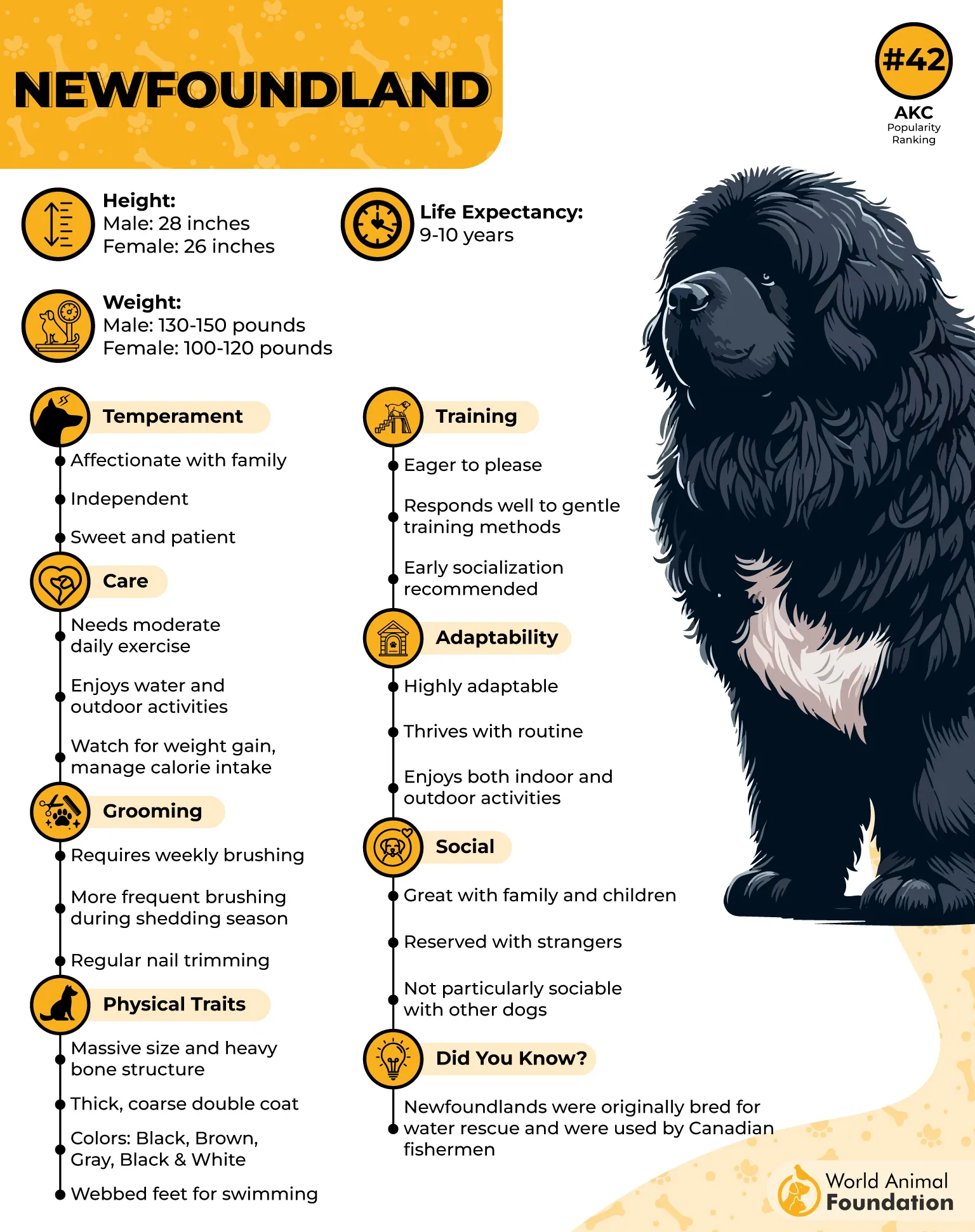
Because of their heavy build and lush coat, Newfs require moderate grooming and attention during seasonal shedding periods. Daily brushing helps reduce matting and controls loose hair. Their coat also offers insulation in cold weather.
Newfoundlands thrive with regular exercise that challenges them without overtaxing joints—swimming, walks along water, or cart work suit them well. They appreciate purposeful tasks and moderate movement. Too much abrupt strain is best avoided.
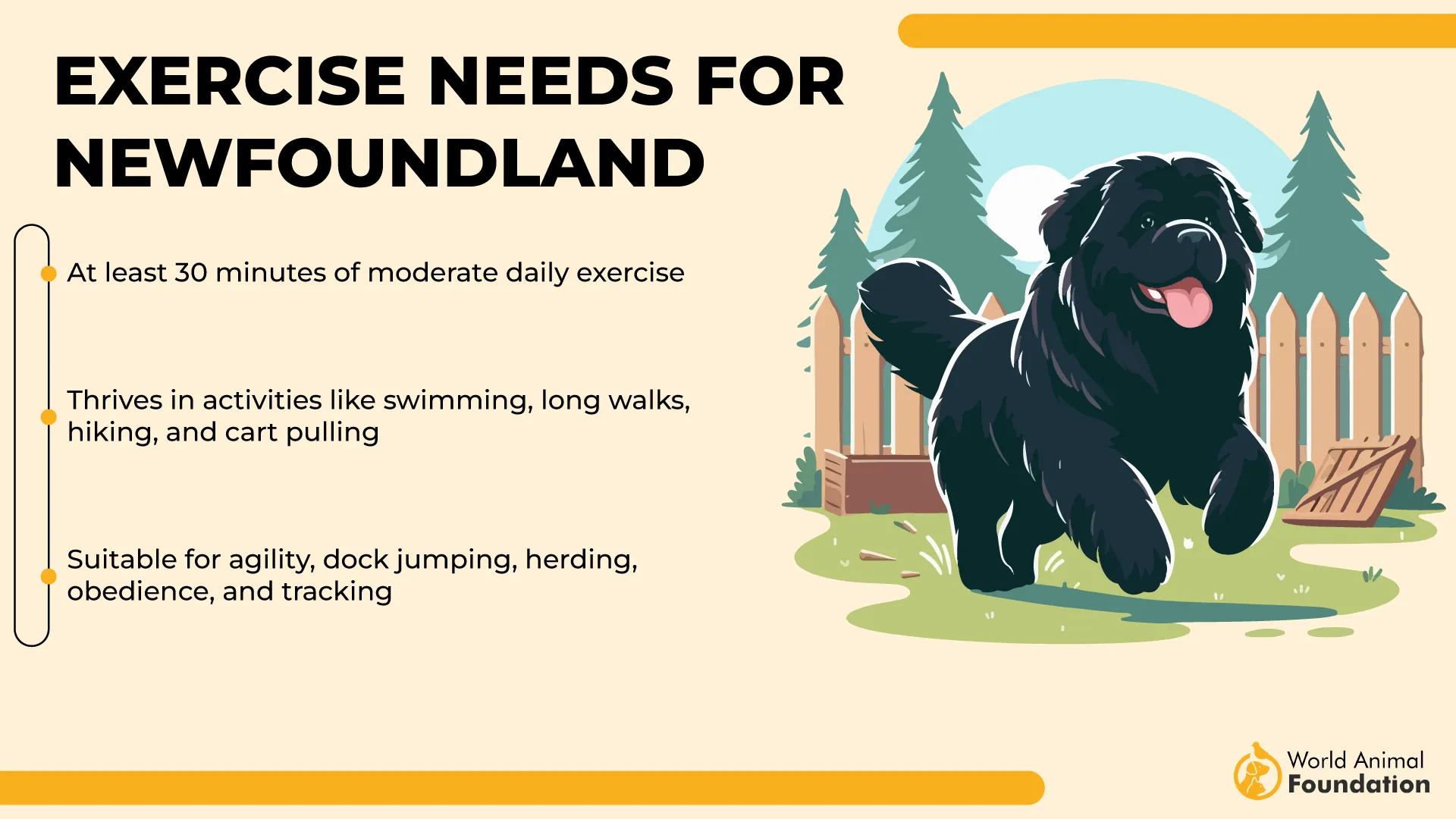
Though not always seen among classic guard breeds, the Newfoundland’s sheer size and calm composure give it natural deterrent power. In a family setting, it can both protect and comfort, blending strength and softness.
Quick Tips
Brush several times weekly during shedding season
Provide swimming or low-impact exercise to preserve joints
Start socialization early, exposing them to varied people and noises
5. Bernese Mountain Dog
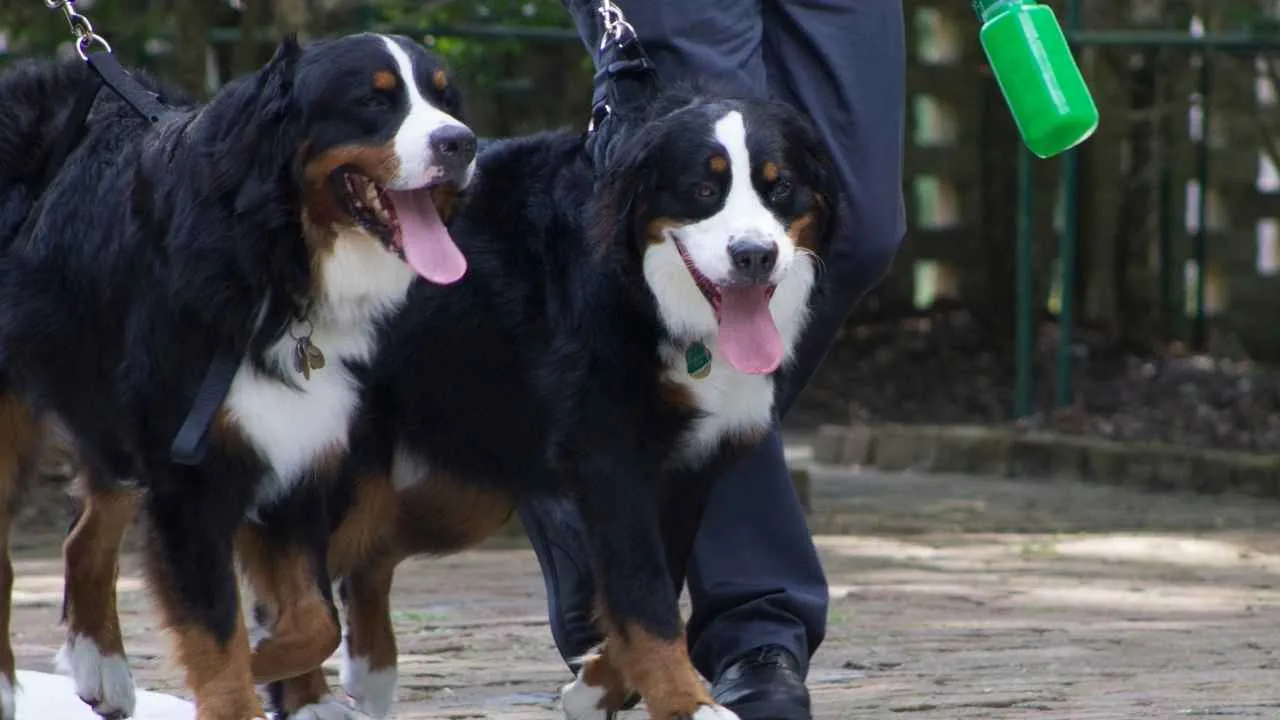
The Bernese Mountain Dog is a sturdy, hardworking dog from Switzerland, known for its striking tri-color coat: black, white, and rust. It was bred to pull carts, drive livestock, and assist on farms in mountain regions. Berners combine power with a calm, friendly demeanor.
Within the family, Berners are deeply affectionate and often bond closely with one or more people. Their temperament tends toward gentle patience, especially with children. They are not typically aggressive but can be protective when needed.
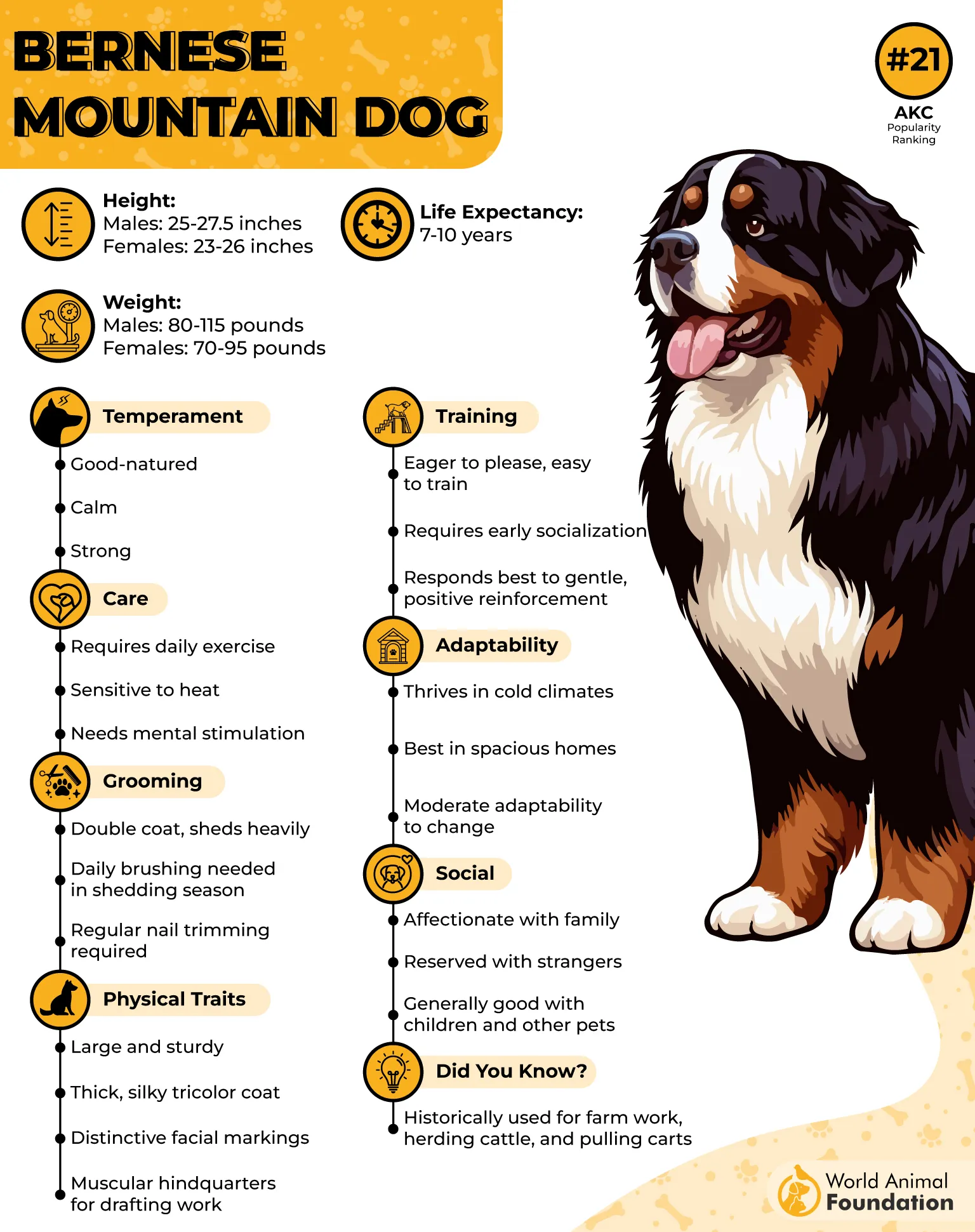
Their double coat is thick and silky; regular brushing is essential to manage shedding and keep the fur healthy. Twice-yearly heavy shedding requires extra care. Grooming helps maintain their striking appearance and comfort.
Bernese Mountain Dogs enjoy moderate activity—walks, hikes, even light drafts or carting suit them well. They can engage in dog sports or take part in family outings. However, they are not built for extreme endurance or very hot climates.
Among large guardian types, Berners offer a comforting presence and visual deterrence. Their dignified posture and loyalty make them compelling guardians in homes where calm strength is valued.
Quick Tips
Brush several times weekly and daily during heavy shedding
Use positive training from puppyhood for confidence and manners
Avoid overexertion in heat; provide shade and rest
6. Great Pyrenees
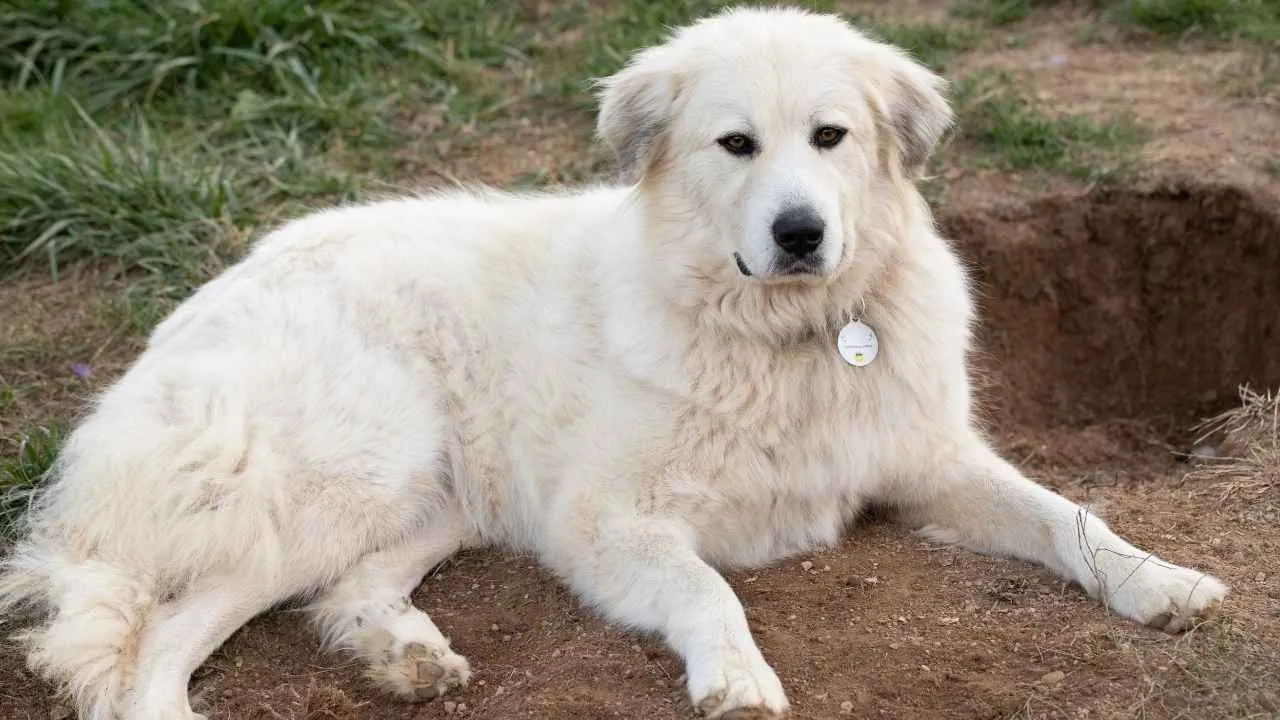
The Great Pyrenees, also called “Pyr,” is a large, thick-coated mountain dog originally bred to guard sheep against predators in snowy terrain. Its coat is weather-resistant, often white or lightly marked, and helps it withstand harsh climates. The breed is powerful, majestic, and built for lofty landscapes.
Pyrs are calm and composed most of the time, but ever watchful. They tend to bark when threats approach, making them good deterrents. They’re not usually aggressive—they prefer to stand their ground and alert rather than charge in.
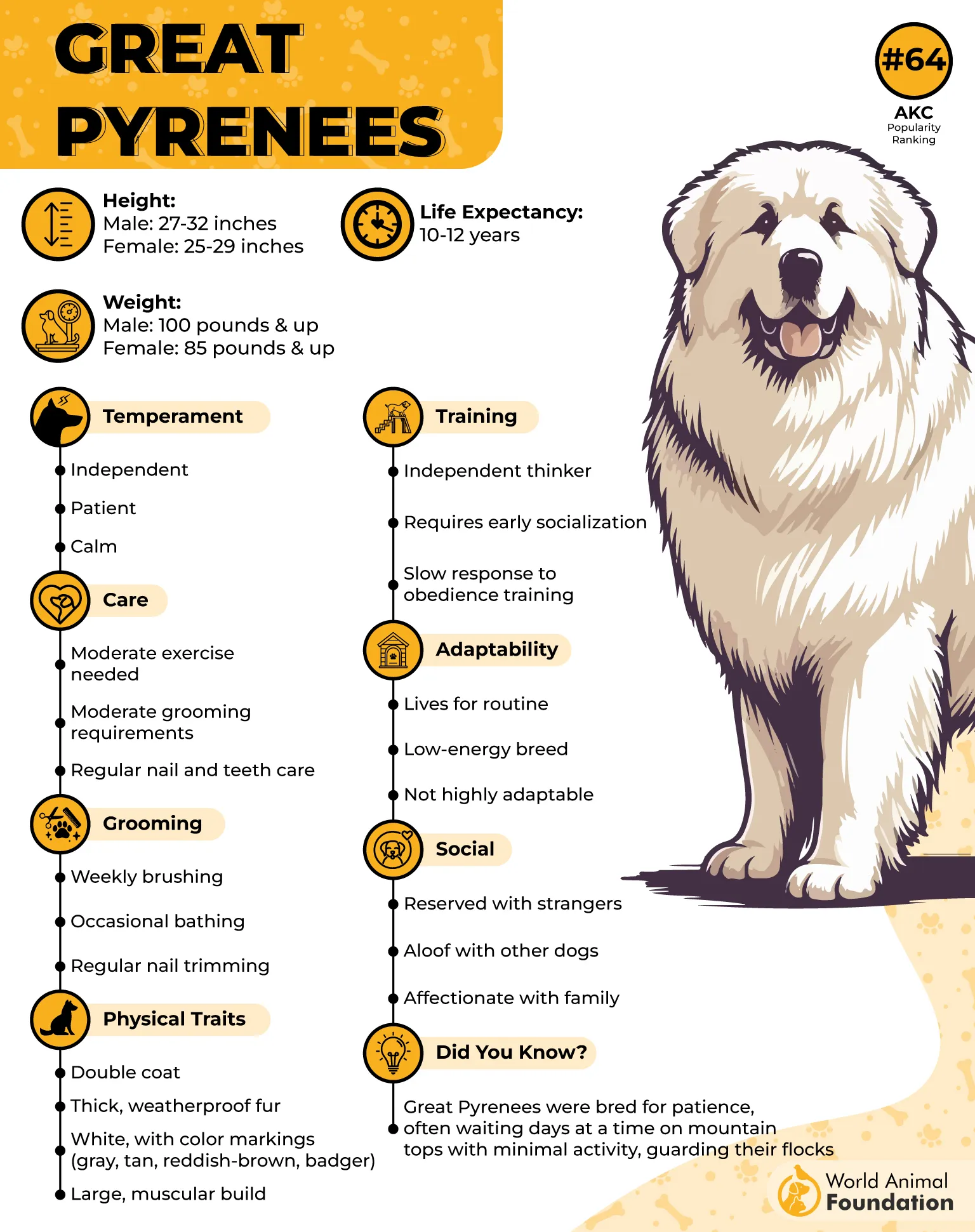
Their coat requires regular maintenance: brushing to prevent mats, especially along feathered areas. Seasonal shedding is heavy, and being tactile with grooming helps keep them comfortable. Their fur also acts as insulation against cold weather.
According to WebMD Pets, this breed enjoys moderate exercise—long walks, terrain exploration, and light tasks. They work best when given purpose: as flock guardians, property protectors, or family companions with freedom to roam. Their endurance is good in cooler environments.
In the context of gentle giants, the Great Pyrenees stands out for its guardian heritage. It blends watchful vigilance with serene companionship, fulfilling both protector and family friend roles.
Quick Tips
Brush weekly and more often during shedding seasons
Enrich with mental tasks or purpose (e.g., boundary patrol)
Avoid leaving alone for long periods—boredom may lead to noise
7. Great Dane
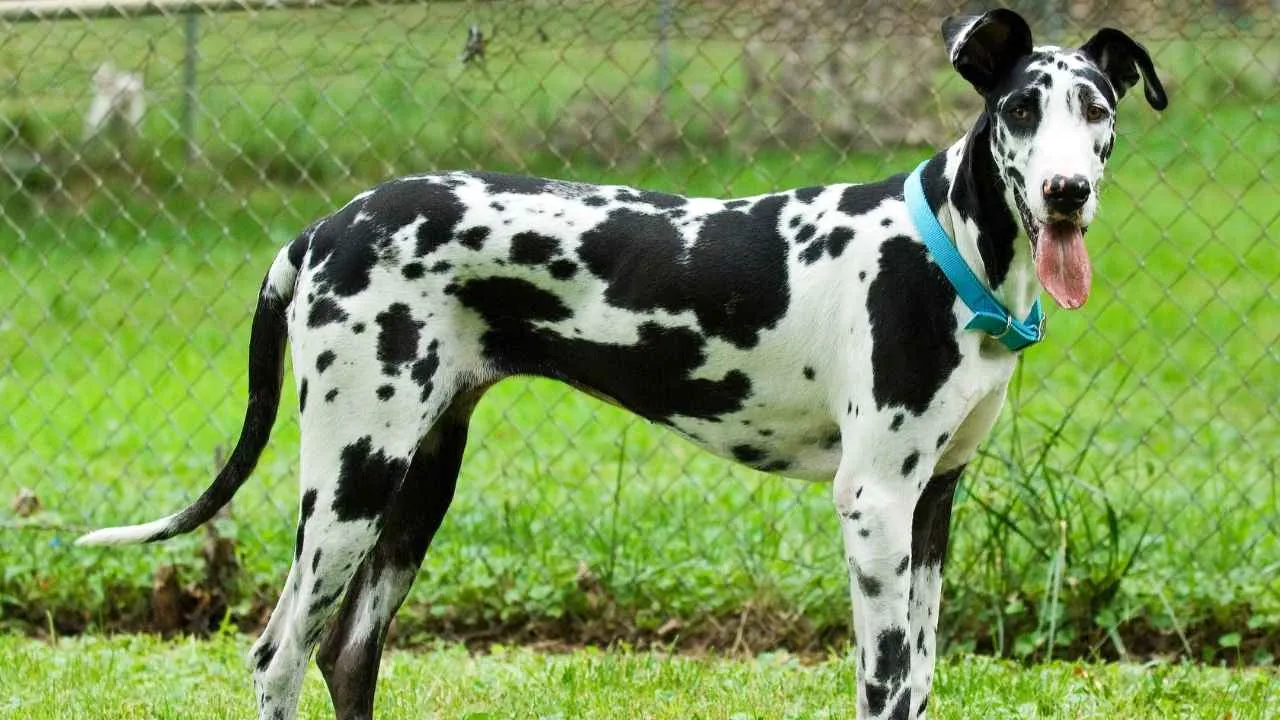
The Great Dane is a towering breed, often called the “Apollo of Dogs,” combining elegance with great size and presence. Despite its stature, it is gentle, friendly, and deeply attached to its family. Its smooth, short coat makes grooming relatively simple.
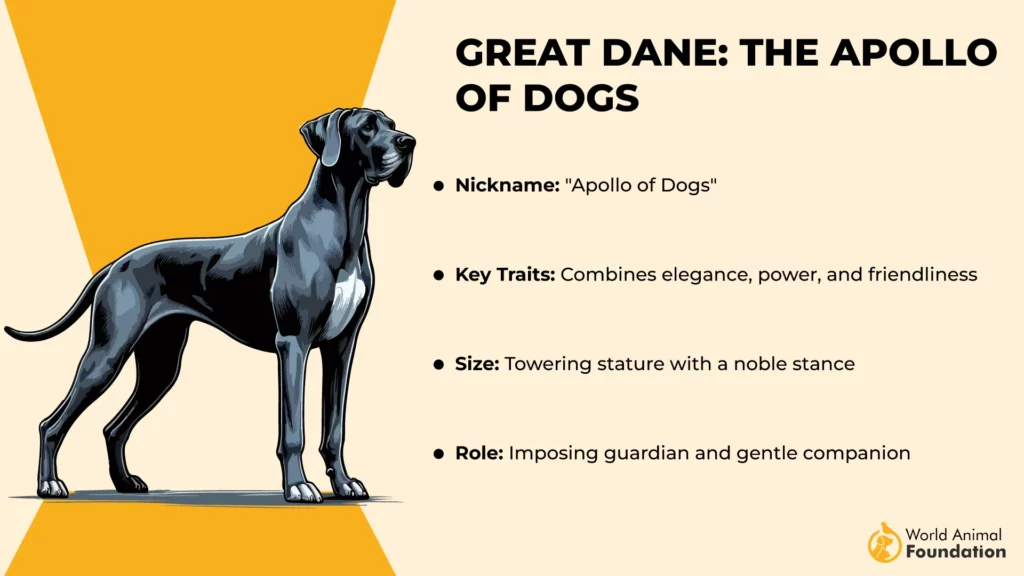
Great Danes are known for their affectionate, calm nature; many enjoy leaning in or resting beside their people. They get along well with children, though their size means supervision is important during play. They embody grace and gentleness in a powerful frame.
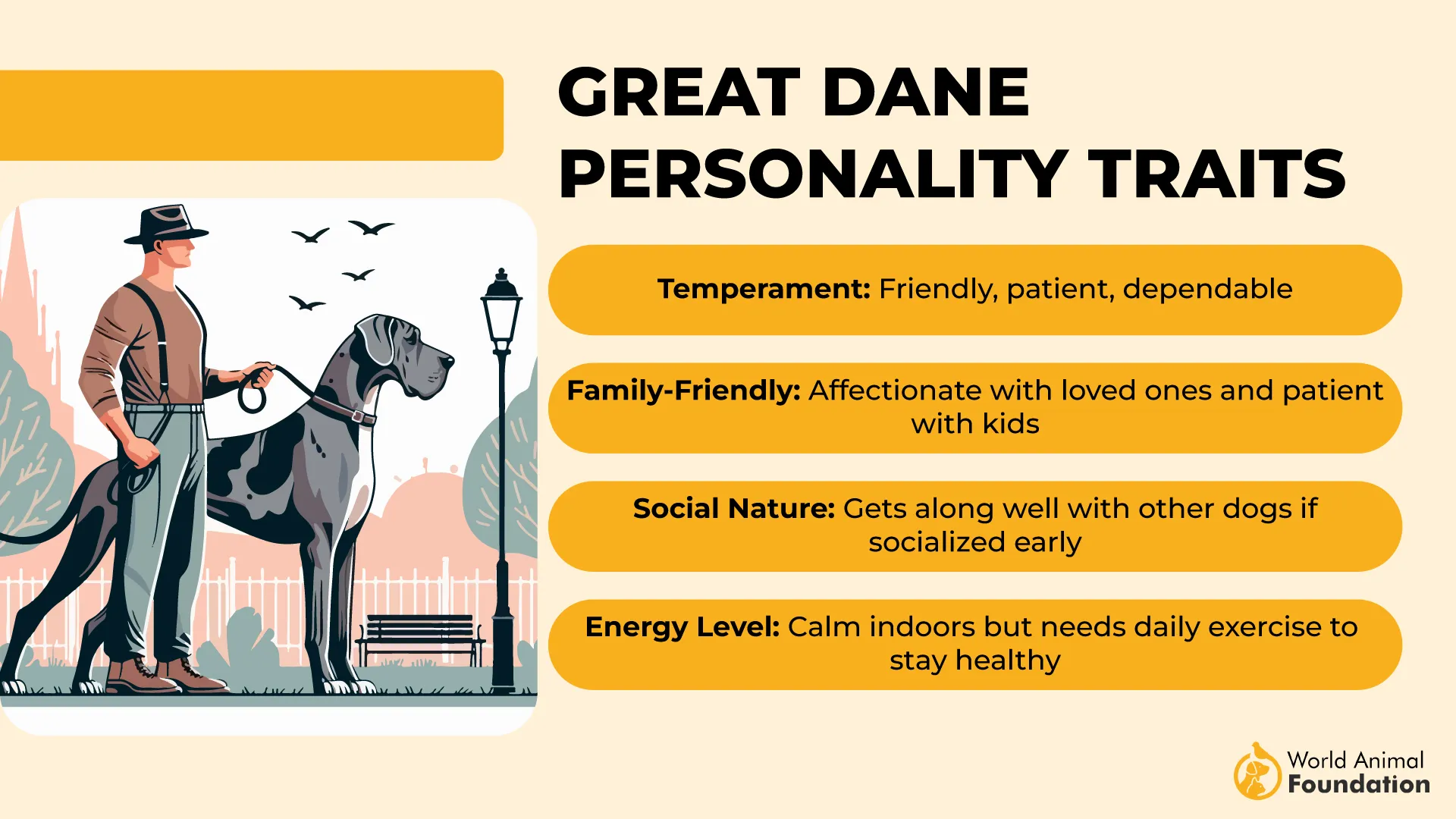
While their coat is low-maintenance, Danes benefit from regular brushing to reduce shedding. Nail trimming, dental care, and ear checks form part of their essential upkeep. Good health care supports their athletic build.
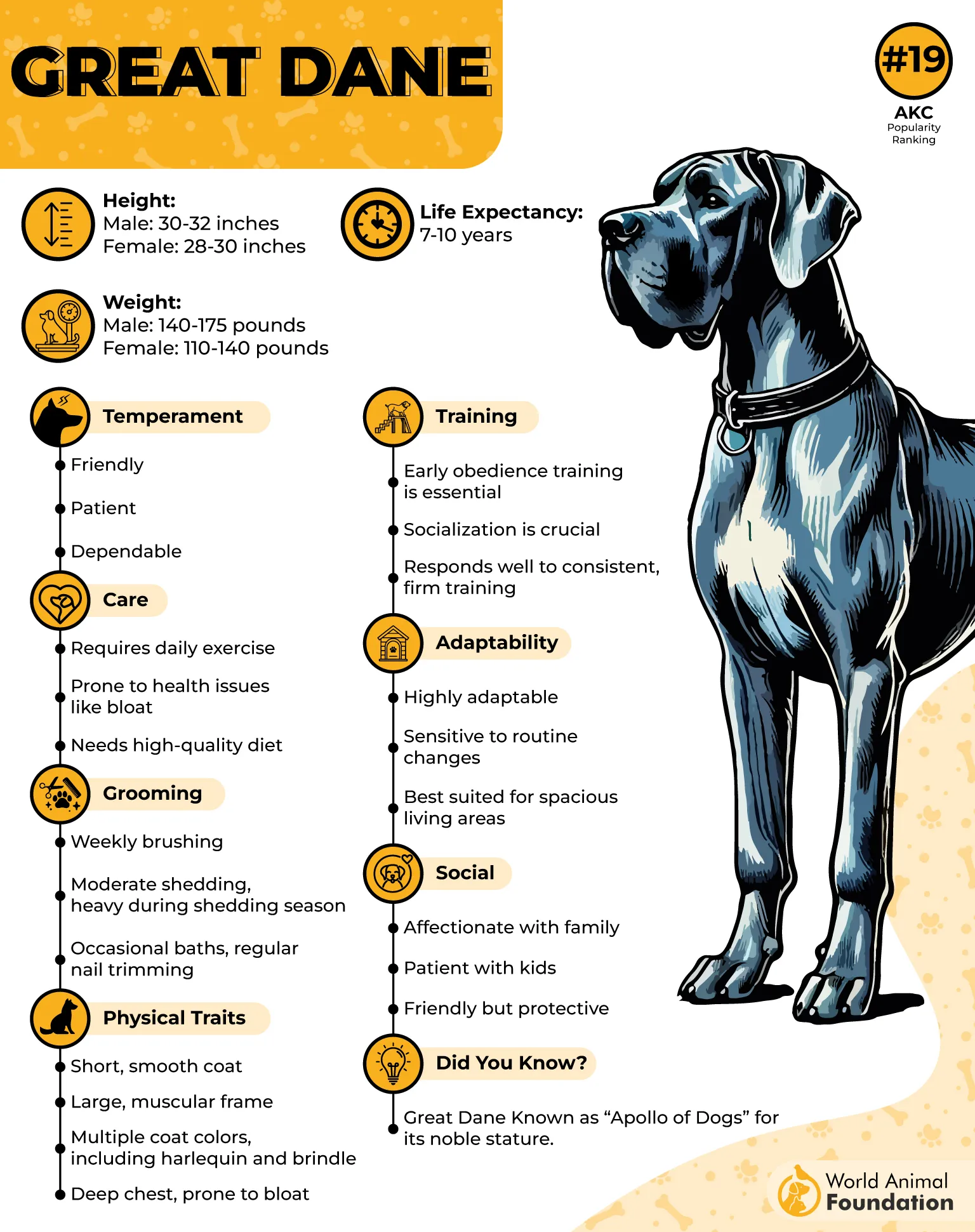
Exercise should be moderate: long walks, gentle games, and light training. Overexertion—especially in puppies—can stress developing joints. With thoughtful exercise, they stay strong without strain.
In a guardian context, Great Danes often deter simply by being present. Their kind nature and impressive size make them both comforting companions and reassuring protectors.
Quick Tips
Limit strenuous activity before full growth to protect joints
Use slow feeders to reduce the risk of bloat
Train early for polite behavior, matching their size
FAQs
1. Which guard dog breeds are known as gentle giants?
Gentle giants are large dog breeds with calm, affectionate personalities and protective instincts. They combine an imposing size with a gentle spirit, making them great watchdogs and excellent family pets.
2. How do gentle giant guard dogs balance protection with calmness?
These dogs rely on their strong bonds and awareness of human emotions. Their gentle disposition allows them to stay calm around family and small children while maintaining a protective nature when needed.
3. What kind of training do these big but gentle breeds need?
They thrive with positive reinforcement and proper training that begins early. Consistent guidance helps them understand boundaries, socialize well with other animals, and adapt to an active lifestyle.
Conclusion
Large dog breeds are often admired for their massive size, gentle spirit, and protective nature. These giant dog breeds form strong bonds with their families, becoming both loyal companions and great watchdogs.
The American Kennel Club recognizes many large-breed dogs that thrive in cold climates, excel in rescue work, and show remarkable sensitivity to human emotions. With proper training and positive reinforcement, a gentle breed can be the perfect choice for families with small children or those seeking an active breed suited for an active lifestyle.
Other dogs, such as Irish Wolfhounds, English Mastiffs, and Dogue de Bordeaux, are affectionately called gentle giants. They commonly need more space, but reward it with a gentle disposition, working dog heritage, and long life expectancy.


